Today’s Current Affairs: 1st August 2024 for UPSC IAS exams, State PSC exams, SSC CGL, State SSC, RRB, Railways, Banking Exam & IBPS, etc
Table of Contents
Quad Foreign Ministers Meeting:
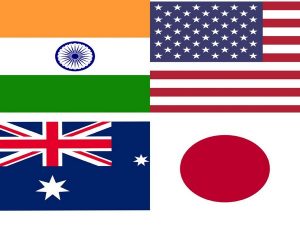
The Quad foreign ministers’ meeting in Tokyo saw Australia, India, Japan, and the US emphasise ending violence in Ukraine, Gaza, and Myanmar, and expressed their intention to expand the Indo-Pacific Partnership for Maritime Domain Awareness (IPMDA) into the Indian Ocean Region.
- The Quad is an informal diplomatic partnership between Australia, India, Japan, and the United States committed to supporting an open, stable and prosperous Indo-Pacific that is inclusive and resilient.
- It was first proposed by Japanese Prime Minister Shinzo Abe in 2007, it became a formal group in 2017 after overcoming initial setbacks, including Australia’s withdrawal due to Chinese pressure.
- Finally in 2017, India, Australia, the US and Japan, came together and formed this “quadrilateral” coalition.
WHO Study On Adolescent Girls:
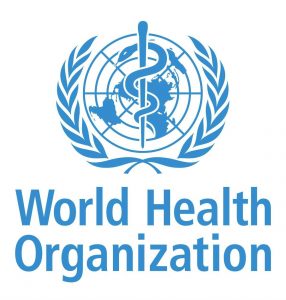
A World Health Organization study published in the Lancet medical journal revealed that adolescent girls aged between 15 and 19 who have been in relationships have experienced physical or sexual violence.
- The survey was conducted with thousands of adolescent girls from 154 countries and regions.
Key Highlights of the WHO Study on Adolescent Girls:
- It reveals that nearly a quarter (24%) of adolescent girls who have been in a relationship have experienced physical and/or sexual intimate partner violence by age 20.
- Approximately 1 in 6 (16%) adolescent girls reported experiencing such violence in the past year.
- No country is currently on track to eliminate violence against women and girls by the 2030 Sustainable Development Goal (Goal 5) target date.
- The highest prevalence rates are in Oceania (47%) (e.g. 49% of girls reporting intimate partner violence in Papua New Guinea) and 40% in central sub-Saharan Africa (e.g. In the Democratic Republic of Congo 42% reporting intimate partner violence).
- The lowest rates are in central Europe (10%) and central Asia (11%).
- Higher rates of violence are found in lower-income countries, regions with fewer girls in secondary education, and areas where girls have weaker legal property ownership and inheritance rights.
- Child marriage significantly increases the risk of intimate partner violence due to power imbalances, economic dependency, and social isolation.
- According to the UN, 1 in 5 young women worldwide (19%) were married in childhood in 2022.
9th Governing Council Meeting Of NITI Aayog:
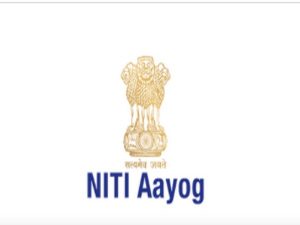
The 9th Governing Council Meeting of NITI Aayog, chaired by the Prime Minister, convened leaders from 20 states and 6 union territories to discuss the “Viksit Bharat @2047” theme, aiming to establish a framework for India’s development as a developed nation by 2047.
- India aims to become the world’s third-largest economy by 2047, with a GDP target of USD 30 trillion. This ambition highlights the country’s focus on sustained economic growth, innovation, and global competitiveness.
- The meeting encouraged each state and district to formulate its vision for 2047, aligning with the national vision of a developed India.
- Emphasising the importance of states in achieving national goals, the Prime Minister reiterated that developed states are crucial for a developed India.
- A significant takeaway from the meeting was the emphasis on eradicating poverty at an individual level. The concept of ‘zero poverty’ villages was discussed, aiming for holistic development starting at the grassroots.
- The Prime Minister stressed the importance of infrastructure, law and order, and good governance as key factors in attracting investments.
- An ‘Investment-friendly Charter’ was proposed to encourage states to create an investor-friendly environment, monitored through parameters fostering healthy competition among states.
- There was a strong emphasis on skilling the youth to make them employment-ready, leveraging India’s demographic dividend as a global skilled resource hub.
- Enhancing productivity, diversifying agriculture, and promoting natural farming practices were discussed as means to improve soil fertility, reduce costs, and access global markets.
- Recommendations from the 3rd National Conference of Chief Secretaries were considered, focusing on 5 key themes such as drinking water, electricity, health, schooling, and land/property management.
- The Prime Minister encouraged States to initiate Demographic Management Plans to address the issues of population ageing in the future.
- The Prime Minister asked the States to take up capacity building of government officials at all levels and encouraged them to collaborate with the Capacity Building Commission for the same.
- The Prime Minister encouraged the creation of River Grids at the State level for the effective utilisation of water resources.
- The integration of technology in governance, addressing cybersecurity challenges, and leveraging AI for efficient governance were highlighted as critical areas for future readiness.
Governing Council of NITI Aayog:
- The Governing Council is the premier body tasked with evolving a shared vision of national priorities and strategies, with the active involvement of States, in shaping the development narrative.
- The Governing Council, which embodies the objectives of cooperative federalism, presents a platform to discuss inter-sectoral, inter-departmental and federal issues to accelerate the implementation of the national development agenda.
- Members:
- Prime Minister of India (Chairperson)
- Chief Ministers(States and Union Territories with legislature)
- Lt Governors of other UTs
- Ex-Officio Members
- Vice Chairman, NITI Aayog
- Full-Time Members, NITI Aayog
- Special Invitees
International Labour Organization (ILO) : In News
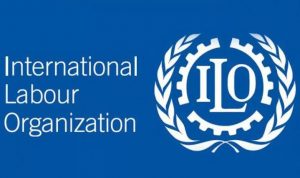
India, a founding member of the International Labour Organization (ILO), is likely to raise a complaint against the UN agency over its India Employment Report 2024.
- International Labour Organization (ILO) is a specialized agency of the United Nations (UN) dedicated to improving labour conditions and living standards throughout the world.
- It was created in 1919, as part of the Treaty of Versailles that ended World War I, to reflect the belief that universal and lasting peace can be accomplished only if it is based on social justice.
- In 1946, the ILO became a specialized agency of the newly formed UN.
- HQ: Geneva,
- It is also a member of the United Nations Development Group (UNDP), a coalition of UN organization aimed at helping meet the Sustainable Development Goals.
- The ILO has 187 member states: 186 out of 193 UN member states plus the Cook Islands.
- It is the only tripartite U.N. agency that brings together governments, employers and workers’ representatives of 187-member States
Zika Virus : Update
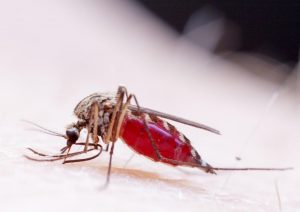
The Union Minister of State for Health and Family Welfare recently said the government of India has formulated an action plan for managing Zika virus Disease.
- Zika virus is a mosquito-borne virus, similar to dengue fever, yellow fever, and West Nile virus.
- It is a single-strand ribonucleic acid (RNA) virus.
- It was named after the Zika Forest in Uganda, where it had been discovered for the first time in 1947, and the first human case of Zika was reported in 1952.
- It typically occurs in tropical and subtropical areas of Africa, the Americas, Southern Asia, and the Western Pacific.
- It is most commonly spread to people by the bite of an infected Aedes species mosquito.
- It can also spread through sexual contact, blood transfusion, and from an infected mother to her baby during pregnancy or childbirth.
- Many people infected with Zika will not have symptoms or will only have mild symptoms.
- The most common symptoms are fever, rash, headache, joint and muscle pain, and red eyes.
- Infection during pregnancy can cause certain birth defects, such as microcephaly, as well as other neurological disorders in the baby.
- It has also been linked to Guillain-Barré syndrome, a rare autoimmune disorder that can lead to muscle weakness and paralysis
- There is currently no vaccine to prevent or medicine to treat Zika
Achanakmar Tiger Reserve : Increase In Tiger Count

Achanakmar Tiger Reserve in Chhattisgarh witnessed a significant increase in Tiger count from 5 to 10, according to the All-India Tiger Estimation (AITE) 2022 census.
- Achanakmar Tiger Reserve is situated in Bilaspur district of Chhattisgarh.
- Achanakmar Wildlife Sanctuary was established in 1975 and was declared a tiger reserve in 2009.
- It covers an area of 553.286 sq. km.
- It is part of the huge Achanakmar-Amarkantak Biosphere Reserve.
- It has a corridor connecting Kanha and Bandhavgarh Tiger Reserve and plays a critical role in the dispersal of tigers among these reserves.
- The Maniyari River flows right from the centre of this reserve, which is the forest’s lifeline.
- It is home to the Baigas, a forest-dwelling tribal community classified as a “Particularly Vulnerable Tribal Group (PVTG)”.
- In 626 hectares of the core area of the reserve, there are 25 forest villages, with approximately 75 percent of the population belonging to the Baiga tribe and the remaining consisting of the Gond and Yadav communities.
Liquidity Coverage Ratio : RBI

RBI recently issued the draft guidelines for banks on the Liquidity Coverage Ratio (LCR), essentially asking them to set aside higher stock of liquid securities as a buffer on deposits.
- Liquidity Coverage Ratio (LCR) refers to the proportion of highly liquid assets held by financial institutions to ensure that they maintain an ongoing ability to meet their short-term obligations (i.e., cash outflows for 30 days).
- 30 days was selected because, in a financial crisis, a response from governments and central banks would typically take around 30 days.
- It is intended to make sure that banks and financial institutions have a sufficient level of capital to ride out any short-term disruptions to liquidity.
- LCR in banking resulted from the Basel III agreement, which is a series of measures undertaken by the Basel Committee on Bank Supervision (BCBS).
- In India, RBI issued Basel III liquidity guidelines in 2012.
- RBI implemented LCR in January 2015, and as per a circular in 2020, banks should maintain sufficient HQLA at all times to meet unexpected withdrawals.
Vattezhuthu : Discovered

Archaeologists recently discovered a Vattezhuthu and eight Tamil inscriptions from the 1,00-year-old Thalikiswarar temple in Tirupur district, Tamil Nadu.
- Vattezhuthu popularly known as Vattezhuthu, was a syllabic alphabet of south India (Tamil Nadu and Kerala) and Sri Lanka used for writing the Tamil and Malayalam languages.
- The name Vatteluttu is thought to mean either ’rounded script’, ‘northern script’, or ‘chiseled script’.
- It first appeared in stone inscriptions in southern India dating from the 4th century AD.
- It probably developed from the Tamil-Brahmi script; a variant of the Brahmi script used to write Old Tamil between from about the 3rd century BC until the 1st century AD.
- Vatteluttu was used to write Tamil and Malayalam in Tamil Nadu until the 9th century.
- In Kerala, Vatteluttu continued to be used until the 15th century. It changed over time to become theMalayalam script, with some letters borrowed from the Grantha script.
- Vatteluttu also developed into the Koleluttu script, which was used, especially by Christians and Muslims, in Kerala until the 19th century.
Ideas4LiFE Portal:
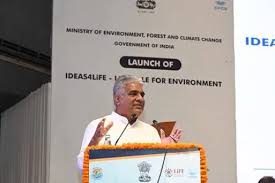
The Union Minister for Environment, Forest and Climate Change launched Ideas4LiFE at IIT Delhi.
- Ideas4LiFE portal was launched for inviting ideas related to products and services, which induce behavioral changes related to environment-friendly lifestyles.
- It aims to encourage and motivate students, faculty and research scholars to contribute their innovative ideas to the global initiative of Mission LiFE.
- It is a remarkable opportunity for inspired minds to participate in a global movement dedicated to environmental sustainability.
- Mission LiFE, or Lifestyle for Environment, is an India-led global mass movement to nudge individual and community action to protect and preserve the environment.
- It was launched at the 26th UN Climate Change Conference of the Parties (COP26) in Glasgow in November 2021.
- The program hopes to “mobilize one billion Indians as well as people in other countries to become individuals who practice sustainable lifestyles.
- It emboldens the spirit of the P3 model, i.e., Pro Planet People.
Nano-MIND Technology:
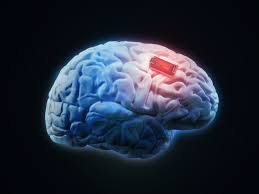
Researchers from the Korean Institute of Basic Science have developed a magnetogenetics technology named Nano Magnetogenetic Interface for NeuroDynamics (Nano-MIND) which has been demonstrated on mice
- Nano-MIND (Magnetogenetic Interface for NeuroDynamics) technology, opens up new possibilities for understanding and manipulating complex brain functions such as cognition, emotion, and motivation.
- It allows for wireless, remote, and precise modulation of specific deep brain neural circuits using magnetism.
- This innovative approach leverages magnetic fields and magnetized nanoparticles to selectively activate targeted brain circuits, offering a significant advancement over existing methods of brain manipulation.
Highlights of the research:
- The research team demonstrated the technology’s capabilities by activating specific neurons in different brain regions of mice.
- One notable achievement was the activation of inhibitory GABA receptors in the medial preoptic area (MPOA), which is responsible for maternal behaviours.
- When these neurons were stimulated in non-maternal female mice, the animals exhibited significantly increased nurturing behaviours, mimicking those of maternal mice.
- The researchers also successfully regulated feeding behaviours by targeting motivation circuits in the lateral hypothalamus.
- Activation of inhibitory neurons in this area resulted in a remarkable 100% increase in appetite and feeding behaviours in mice.
- Conversely, when excitatory neurons were activated, the mice showed a more than 50% reduction in appetite and feeding behaviours.
PARAKH : Report
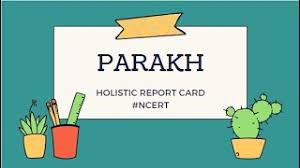
A recent report submitted to the Education Ministry by PARAKH recommends incorporating student performance from Classes 9, 10, and 11 into the final Class 12 marks.
- PARAKH (Performance Assessment, Review and Analysis of Knowledge for Holistic Development) is a unit established within NCERT in 2023 to standardise school board assessments nationwide.
- PARAKH team will consist of leading assessment experts with a deep understanding of the education system in India and internationally.
- Objective is to fulfill the basic objectives of setting norms, standards, guidelines and implement activities related to student assessment along with other tasks as mandated by the National Education Policy (NEP) 2020.
- The mandate of PARAKH is to work on bringing the school boards across the States and the Union Territories to a common platform.




